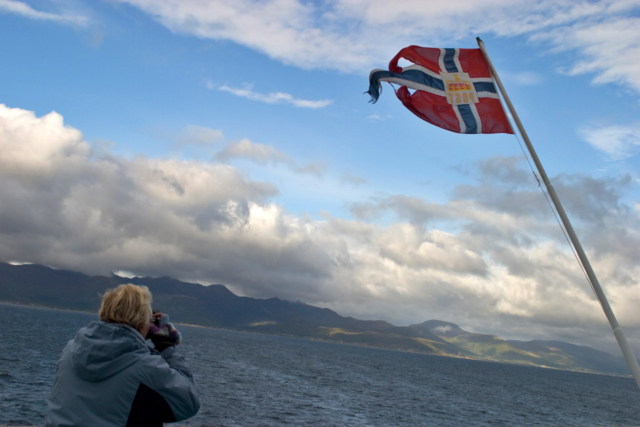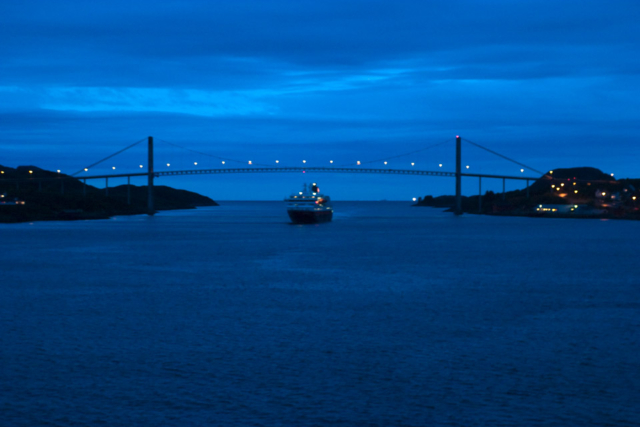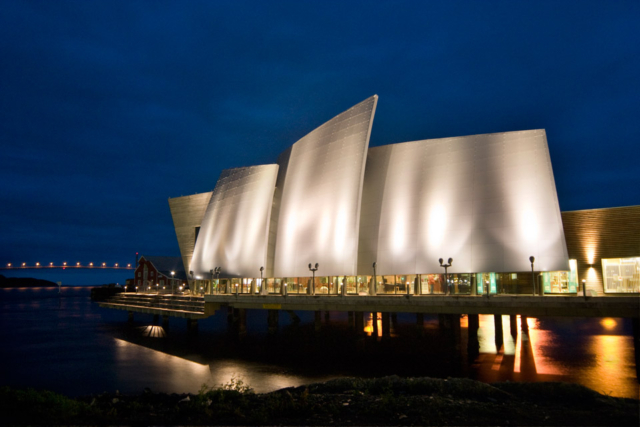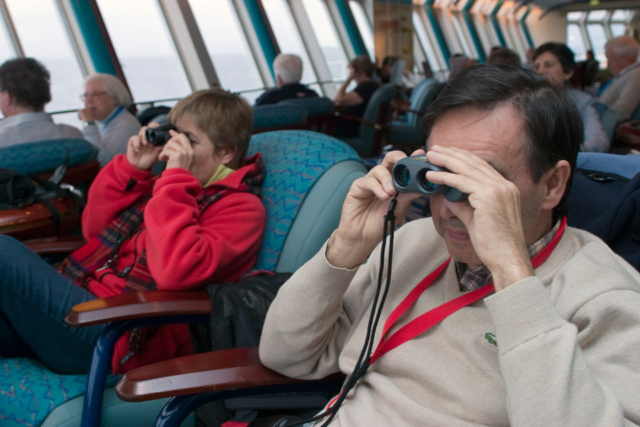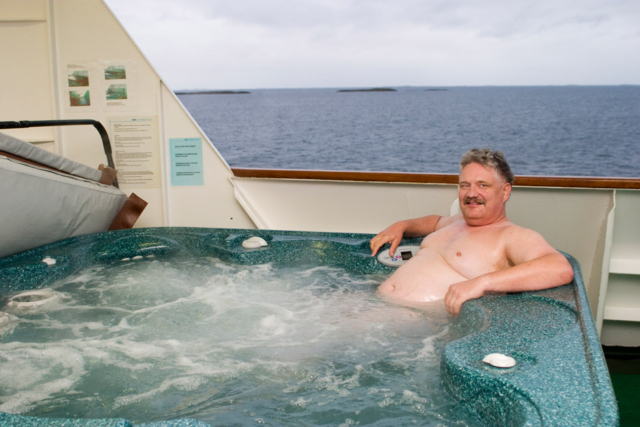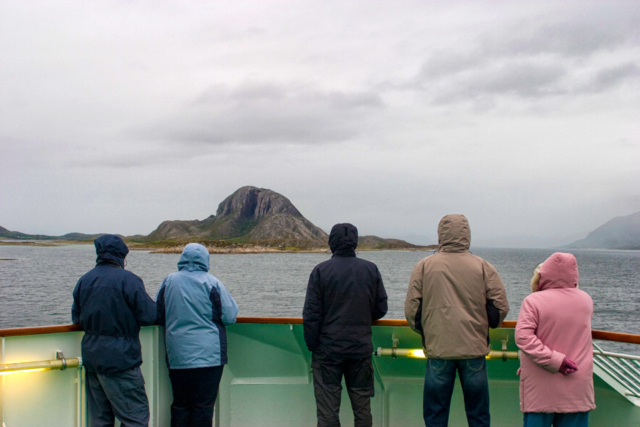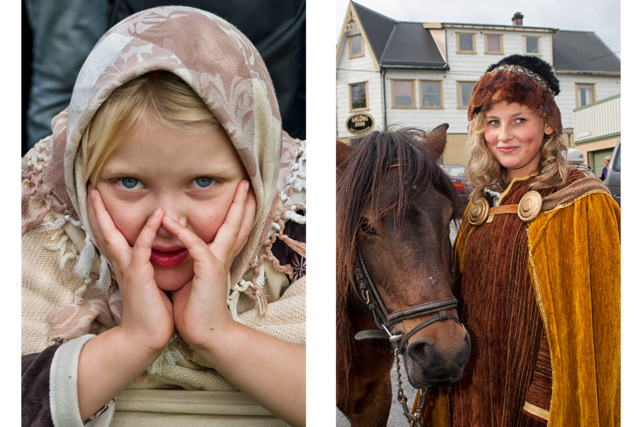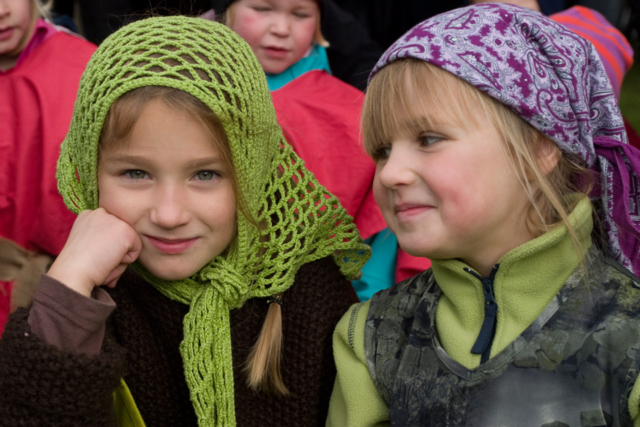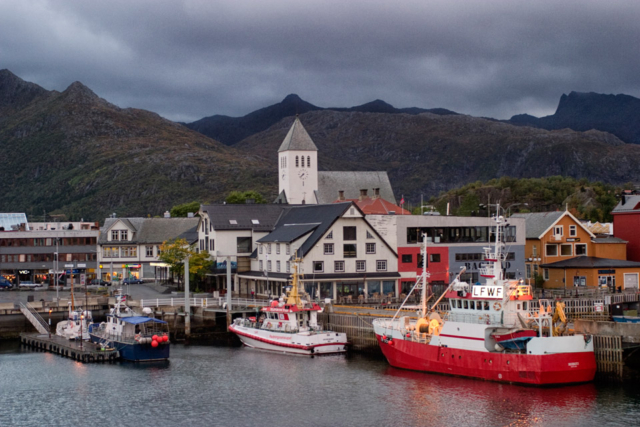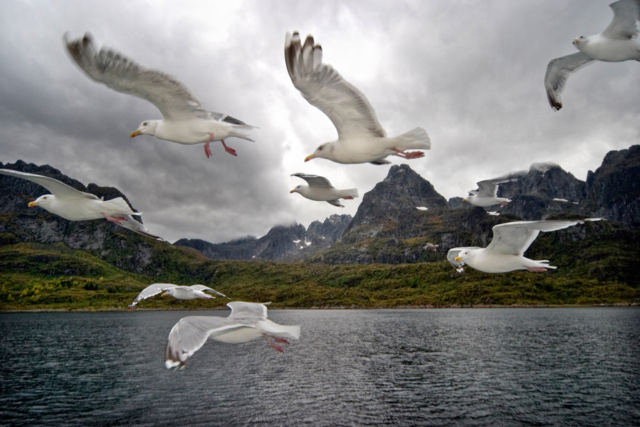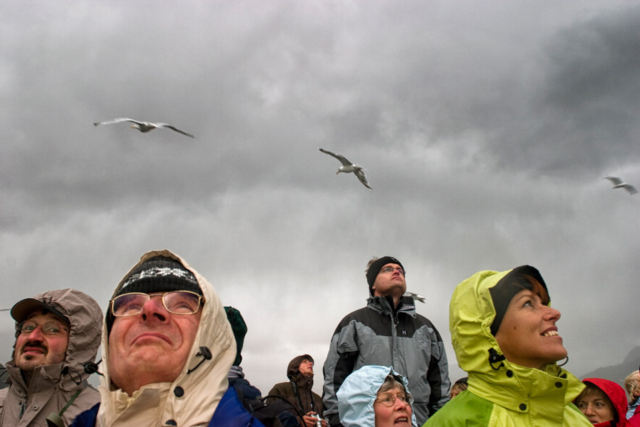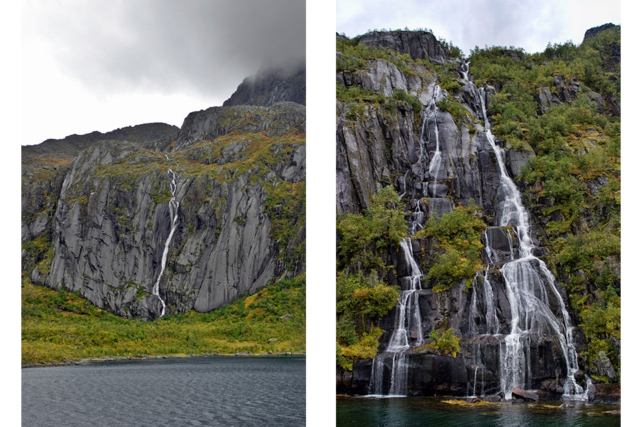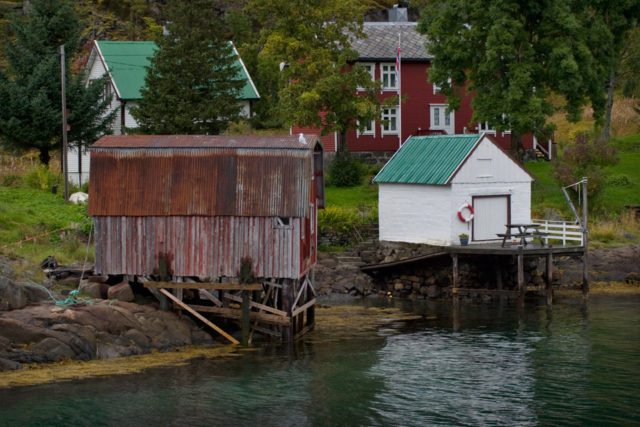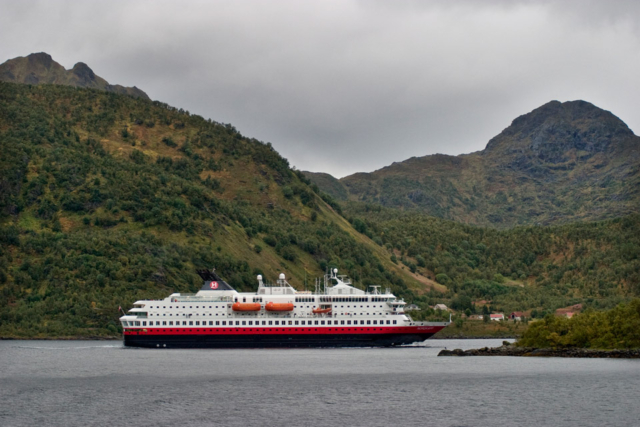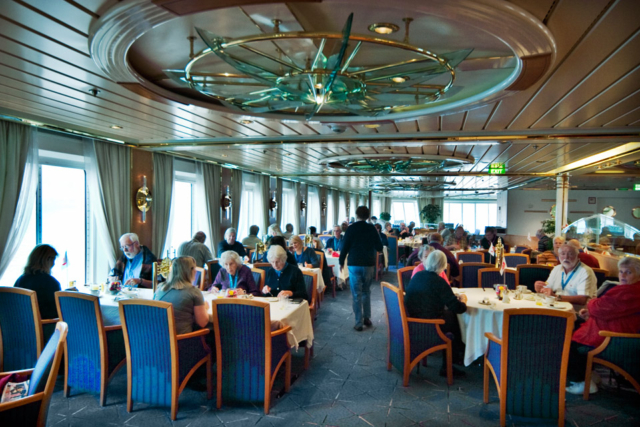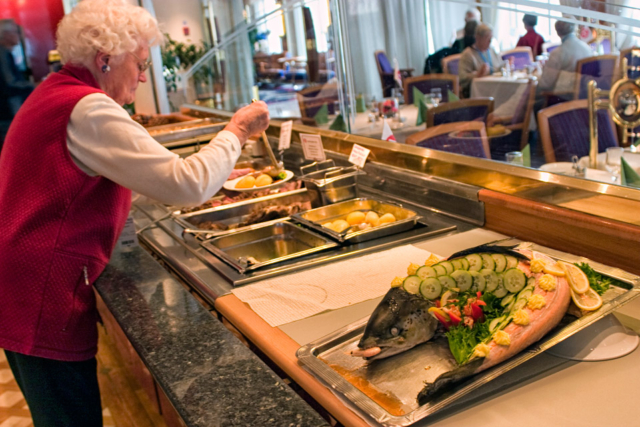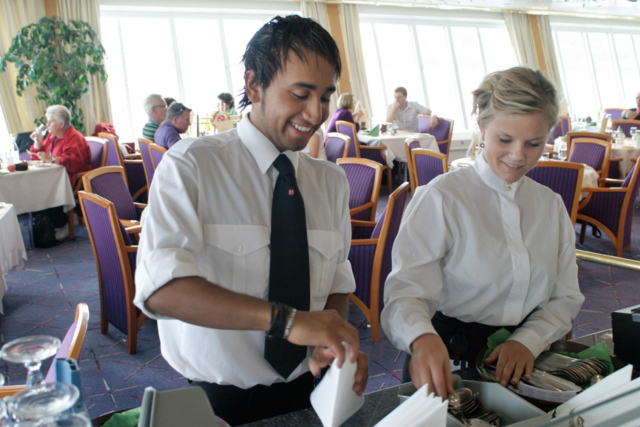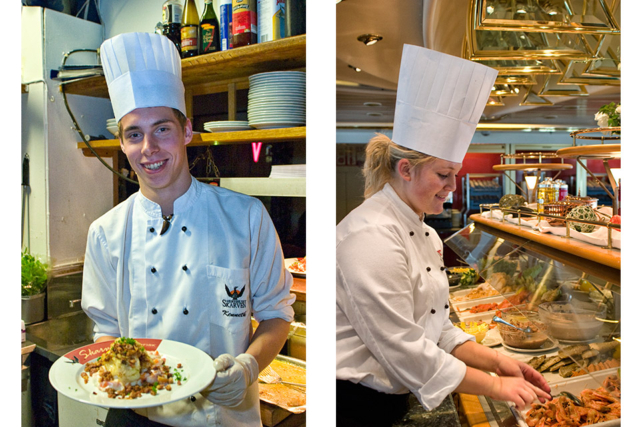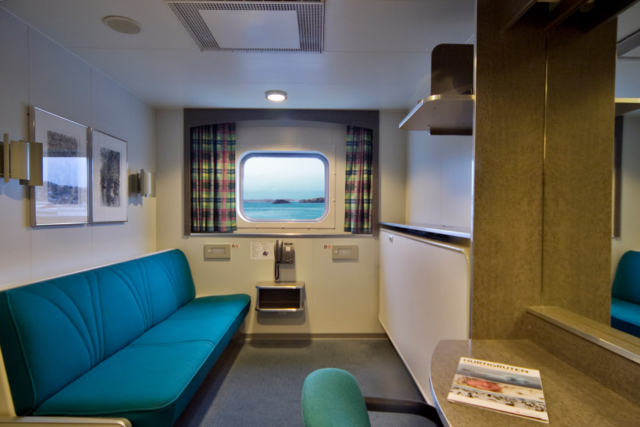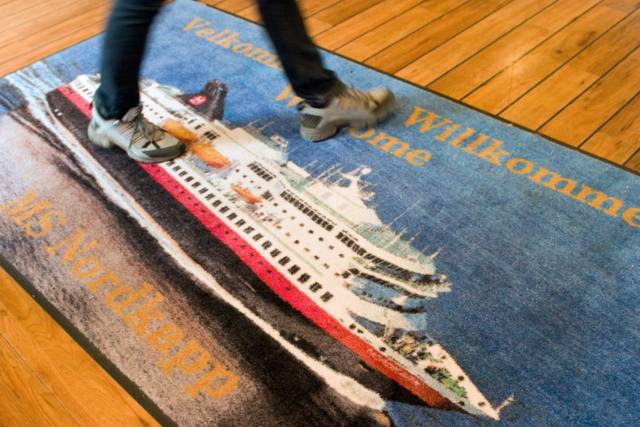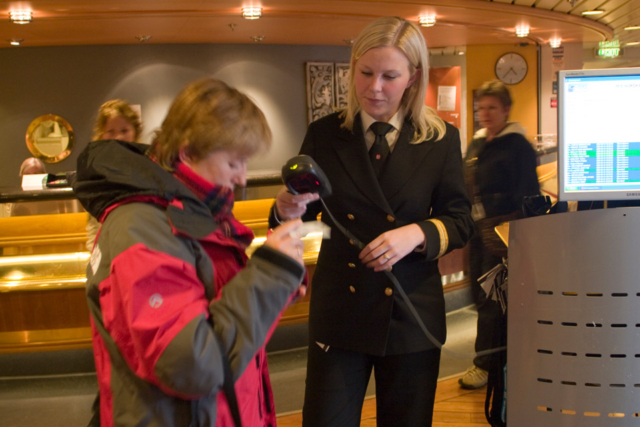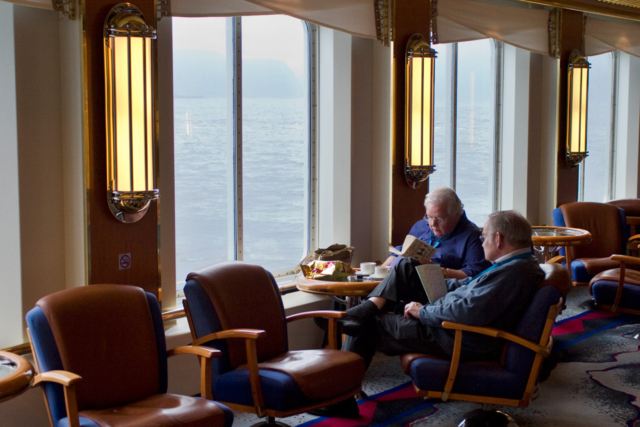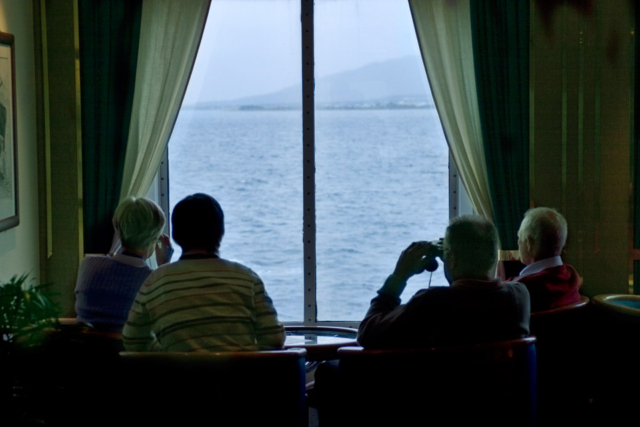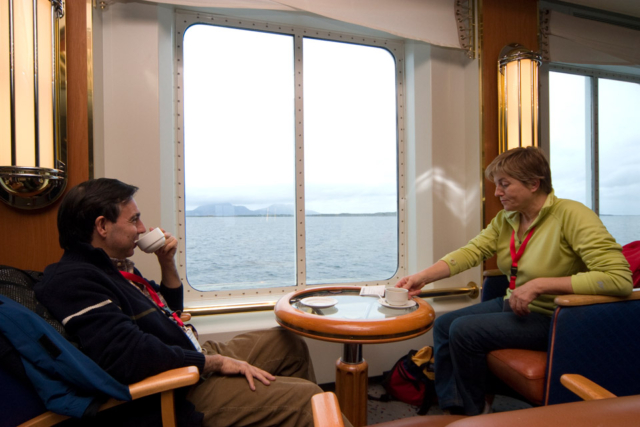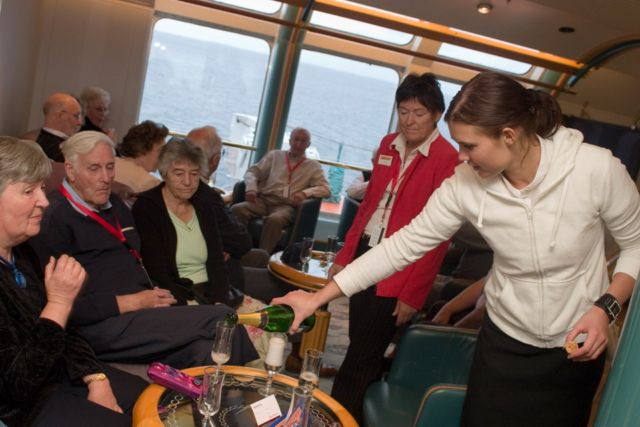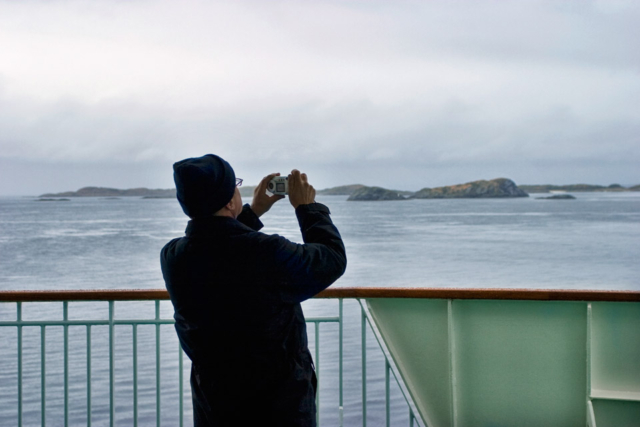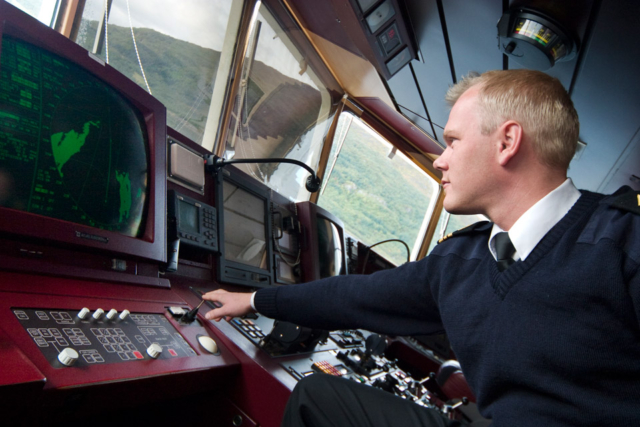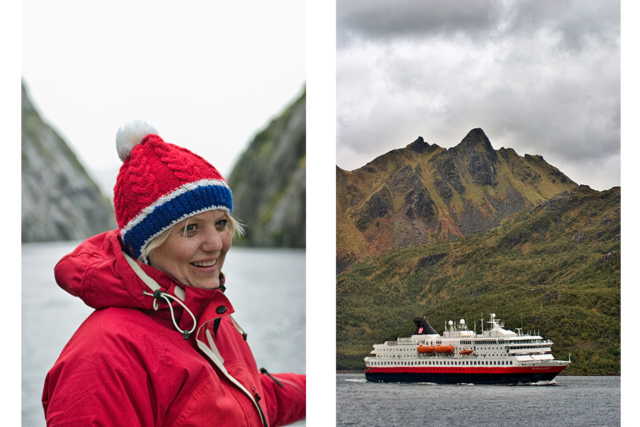AV INGA RAGNHILD HOLST | FOTO: FRAN FERNÁNDEZ
(NORWEGIAN) The world’s most beautiful sea voyage happens on a converted cargo ship.
Ay, hermoso! Chus García Sirera gasps at the sight of the mountains as if enjoying a delicious meal. The Raftsundet strait opens up and the Hurtigruten ship Nordkapp sails through deceptive reefs that bob just above the water’s surface. García Sirera has sailed from Kirkenes and will continue down the coast as far as Bergen. She is one of approximately 4.6 million passengers who travelled on a Hurtigruten cruise ship in the course of 2007. Hurtigruten ships also carry 120,000 tons of cargo. Hurtigruten has undergone a transformation from postal delivery service and milk run to a fleet of cruise ships for seasoned travellers.
Express route
‘Be thorough, for this ship is for the coastal express route,’ said the far-sighted and enterprising Tromsø- born Richard With (1846-1930) when the very first Hurtigruten coastal steamer was built on commission by Vesteraalens Dampskibsselskap in 1891. The company had by this time been in operation for 10 years. Richard With came from a family with strong maritime traditions. At the age of 15, With signed onto a brig loaded with fish on its way to Italy and remained on board merchant ships until his mother died in 1871. He then returned home and bought the trading post at Risøyhamn. During the autumn and winter of 1880–1881, With discovered that the fish that had been salted at Sildepollen in Eidsfjorden was not being shipped out. They lacked a means of transport. In the course of 1881 he talked to the merchants in the district and managed to raise the sum of NOK 17,000 towards the purchase of a ship.
With journeyed to Ålesund to buy the steamship Arendal. But there was a problem; he needed another NOK 3,000. With telegraphed home to Stokmarknes and managed to secure a loan for a further NOK 10,000 – against no other security than a receipt. The transaction successfully completed, he sailed the ship home himself, taking on various tugging jobs as they presented themselves along the route. Vesteraalens Dampskibsselskap was founded on 10 November that year. Arendal was ‘converted’ from a southerner to a northerner by being re-christened with the distinguished name of Vesteraalen.
The whole world comes to dock
Hurtigruten brought prosperity and adventure to the harbours of the coastal villages.
‘When we were young we used to go down to the harbour to look at the ship. Not a lot went on in those days,’ says Oddvar Pettersen from Sandnessjøen.
Hurtigruten is still important to the villages along the Norwegian coastline. Oddvar Pettersen, chair of the board of Torolvsteinen AS, a company which is looking to build a coastal heritage centre, tells of the Vikings who once lived in the Helgeland region, and of how Hurtigruten, with its many sophisticated passengers, is an important market.
‘Our plan is to kidnap the tourists who come here with Hurtigruten and bring them to our park. Hurtigruten passengers are interested in more than just leaning over the railings. The idea is that we will eventually board the Hurtigruten ships at Nesna and promote the Viking Centre at Helgeland to whet their appetite and make them want to go ashore at Sandnessjøen,’ Mr Pettersen explains.
Hurtigruten welcomes such initiatives, and already has a number of arrangements with tour operators all along the coastline. While cargo is being loaded and unloaded, tourists can disembark and join excursions such as husky sledging across the open plains or watching killer whales in the fjords during the winter season.
For the inhabitants of the fishing villages, islands and narrow straits it could perhaps be said that Hurtigruten’s agreement with the government to provide daily sailings is even more important. The agreement meant that the company earned revenues of NOK 206 million in 2006, and that goods were delivered to the coastal communities.
While Hurtigruten has traditionally appealed to members of the older generation, Iain Cottam, director of Hurtigruten’s London office, reports that the younger, seasoned tourists are also starting to show an interest.
‘We’re talking about people who are looking for an experience that is out of the ordinary. We receive positive feedback from the younger passengers, who tell us how impressed they were by the northern lights and the North Norwegian coastline.’
Hurtigruten is currently preparing special packages aimed at younger customers.
A natural circus
For a few seconds the sea eagle hovers motionless in the air. Steffi (25) from Germany waves a shiny coalfish in her hand, then throws the fish into the Trollfjord waters. The eagle dives, missile-like, through the school of seagulls and snatches it from right under the beak of a gull that was looking forward to fish for dinner.
‘It’s showing off!’ exclaims a British passenger,applauding in delight.
For what else can you do when nature puts on sucha marvellous show?
The Hurtigruten ships with their black and red hulls have no desire to imitate the cruise ships sailing the Mediterranean and Caribbean. People come here to experience the bird life, the narrow straits, the moors, the wind and the light. All the same, Chus García Sirera from Barcelona is not sure whether that is enough; she finds the standard somewhat basic.
‘But maybe that’s all part of the experience,’ she says, as she cuts up a whale steak. ‘I hope I get to see a killer whale.’
Travelling on Hurtigruten does not come cheap. A trip from Bergen to Kirkenes costs NOK 12,479 per person for a basic cabin in low season. The most expensive alternative is a round trip in a suite during high season costing NOK 59,000.
‘But a trip on Hurtigruten is really not that much more expensive than a long week-end in Prague,’ argues Iain Cottam. British tourists can now choose from a range of package trips which include air travel and half board for ?395.
Who would ever have imagined that a boat carrying herring from Eidsfjorden would evolve into a fashionable cruise for sophisticated Europeans?
FANTASTIC EXPERIENCES
• Bird life: Fifty species of birds such as puffins, Brünnich’s guillemot, auk, eider, shag and sea eagle have their habitats along the coast.
• Whales: The killer whale can be seen in Tysfjorden during the winter season. The killer whale can grow up to 6 tons in weight and up to 10 m in length. Hurtigruten organises killer whale safaris in collaboration with Kystopplevelser. (Tel: (+47) 815 21 250/(+47) 815 66 555, website: www.kystopplevelser.no)
• Tromsø: The stockfish, bacon, local Mack beer and aquavit served at Skarven restaurant (Strandtorget 1, Tel: (+47) 77 60 07 20) is an unforgettablemeal. Hurtigruten organises excursions to the Arctic Cathedral.
• Bergen: A stroll along Bryggen, the old wharf in Bergen (on UNESCO’s world heritage list since 1979), and the fish market.
• Geirangerfjorden: Storfjorden, the fjord arm at Sunnmøre in the municipality of Stranda, was placed on UNESCO’s World Heritage List in 2005. With its steep rock walls and the Brudesløret (‘The Bride’s Veil‘) waterfall, it is a natural tourist attraction for visitors from all over the world.
• Dog sledging across the open plains: Sledge trip with huskies and a coffee break in a lavvu, the traditional tent of the Sami people. The excursion costs NOK 895. Available from 1 November to 30 April.
Source: www.kystopplevelser.no
FLIGHT INFORMATION
Norwegian has direct flights to Tromsø from London/Stansted twice a week. There are also direct flights to Bergen from Stockholm, London/ Stansted and Warsaw. For more information,www.norwegian.no
PRICES
A six-day cruise from Bergen to Kirkenes in a basic cabin costs from NOK 12,479 during low season. The same cruise in an upgraded cabin in July costs NOK 30,720. Prices include three meals per day. Be prepared to pay 50% more for a suite. Excursion prices are not included in the cruise fare. These cost from NOK 240 for a museum visit and up to NOK 1,090 for a snow scooter safari in Kirkenes.
It is possible to book shorter trips or package deals with excursions, such as the Fjord and Mountain trip with Coastal Experiences, which includes hotel accommodation, sailing on Hurtigruten and visits
to natural attractions such as Nærøyfjorden, for approximately NOK 4,100. Passengers may leave their ship while in harbour and join the next one.
Source: Hurtigruten. Sjøveien mot nord by Dag Bakka Jr, Hurtigruten Group ASA
Published in Norwegian Inflight Magazine


